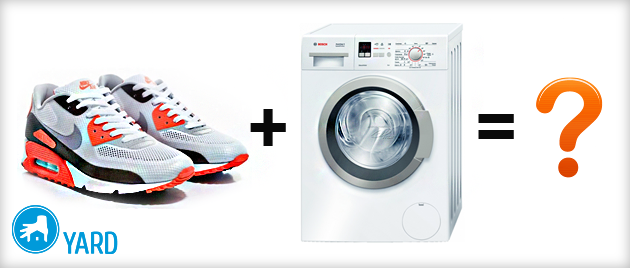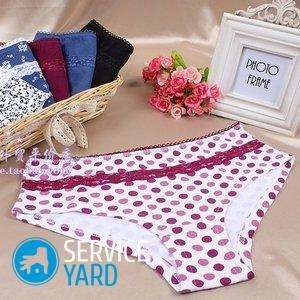The well near the country house is pure cool water directly from underground springs, which is so pleasant to wash in the morning. A well-groomed well gives the site a romantic look, but the owners' enthusiasm can be lost if the water becomes less. Many factors affect the water level. Some of them are a given, associated with a piece of land on which the well is located. They must be taken into account even before installing it. Others are completely controlled by humans. Experts talk about what to do with those and others, as well as how to keep the water level in the well. "Schools of repair" Leroy Merlin ".
Choose the right time to dig
Water can leave the well for natural reasons during drought or winter cold. The water level is lowest during two periods: at the end of August, when summer rains have long passed, and autumn has not yet begun, and in February - early March, when the water in the ground is frozen, and before the heat is still long away.
To avoid a situation where your well will be empty several times a year due to heat or frost, you need to choose the right time for digging it. It is tempting to start work in June-July, at the height of the summer season. But this is not worth doing: the water at this time rises too high to the surface. There is a risk that you will only get to groundwater, where the water is not as clean as in interstratal wells. In addition, the top water (topsoil saturated with water) can blur and interfere with the installation of concrete rings.
It is best to dig a well when there is least water in the soil: in August or early September. During this time, the ground is warm enough to dig and the water level is very low. During the year, it will not drop much, on the contrary, there will be more water due to summer rains and melting of water in spring.
Install the bottom filter
The bottom filter is a layered cake made of sand, gravel or crushed stone and pebbles, which is placed on the bottom of the well. It is needed not only to purify water from impurities and small particles of the earth. The bottom filter helps to avoid silting of the bottom when water mixes with clay and sand and fills a height equal to several concrete rings.
Not all wells need a bottom filter. If there is dense clay at the bottom, it will only reduce the quality of the water. A filter is necessary where the bottom consists of loose clay, water-bearing sand or quicksand - soil that is saturated with water and spreads under pressure. In wells with such a bottom, the inflow of water is more powerful, but the likelihood of siltation is higher.
Depending on the type of bottom, the filter is laid in different ways. On a loose clay bottom, you must first fill up large stones, then medium pebbles or rubble, and finally sand. If the bottom is sandy, fill up the materials in the reverse order. If there is quicksand at the bottom, you need, firstly, to lay the bottom filter as for loose clay, and secondly, to install a special shield made of wood or metal with an anti-corrosion coating on top. It will hold the filter in place, preventing it from rising with the constantly flowing water.
Shields are made of wood that tolerates long contact with moisture well: aspen, oak or larch. It is best to fix the shield over the filter using special wedges and locking pins. Then there is less risk that it will rise with the water level or be sucked into quicksand.
The bottom filter should be changed at least once a year. Otherwise, the water in the well will become dirty, change its smell or color, impurities will appear in it and it will be impossible to use it. The aspen shield also needs to be replaced, although it can last up to 3-5 years, provided that it is installed correctly. It is better not to wait until it starts to deteriorate from moisture and the activity of microorganisms.
Take care of waterproofing
Water can escape not only due to the characteristics of the soil and weather, but also due to structural damage. The most common reason is a violation of the tightness of the concrete rings that make up the shaft of the well. If gaps appear between the rings, sand, clay or quicksand will flow through them. They will block the inflow from water-bearing streams and will sink to the bottom, interfering with the flow of water.
The best protection against leaks between concrete joints is a water seal. This is a waterproofing mixture with which the joints of the rings in the well are coated. Its main components are cement, sand, water glass and chemical additives that increase the solidification rate. The hydraulic seal can be applied with an ordinary spatula, like plaster, before cleaning the walls of the well from dirt or loose concrete particles. A high-quality hydraulic seal sets from 10 seconds to 5 minutes, depending on the composition of the mixture.
Choose a pump with the right power
Walking to the well with buckets several times a day can be difficult and inconvenient. With the help of a pump, you can draw water from an underground source directly into the house. A submersible vibration pump is suitable for a country house: it has no rotating and rubbing parts, which need to be lubricated, it can work in alkaline water, practically does not heat up and has an affordable the price.
When choosing a vibration pump, it is important to correctly calculate its performance - the volume of water that it can pump out of the well per hour. It should be 15-30% lower than the flow rate of the well - the volume of water that enters the well within an hour. Otherwise, you will be pumping out water faster than it can fill the well. This can lead to silting of the bottom and damage to the pump.
Well flow rate can be determined by knowing the height of one concrete ring. You need to measure to what level the water rises per hour, divide by the height of the ring and multiply by the number of liters of water that one ring can hold. For example, if your well has standard KS 10-9 rings, then the water level in meters will need to be divided by 0.9 (the height of the ring in meters) and multiplied by 700 (how many liters it holds). For a country house, a submersible vibration pump with a capacity of no more than 1000 liters per hour is suitable. The flow rate of wells 15–30 meters deep usually slightly exceeds this value.
Choose economical technology
The water in the well will not decrease if you spend less of it. At home, this is easy to do: you can turn off the water while brushing your teeth and soaping your hands, take a shower, not a bath. In the garden, watering equipment will help to save water.
The simplest devices that do not require engineering intervention are hose nozzles. Choose attachments with multiple watering modes. This allows you to optimize the water supply based on the irrigation object and avoid excessive water loss.
Use economical irrigation systems such as drip irrigation, sprinklers, or subsoil irrigation. Automatic programmers can be easily combined with them - devices with the help of which the irrigation interval, its duration and intensity (and therefore the volume of water consumed) are set. The programmers can be supplemented with weather sensors that will block the water supply if the set values are exceeded. These include sensors for rain, soil moisture, frost and even wind. The use of economical irrigation systems and programmable control devices can save up to 70% of water used for irrigation.
The well near the country house is pure cool water directly from underground springs, which is so pleasant to wash in the morning. A well-groomed well gives the site a romantic look, but the owners' enthusiasm can be lost if the water becomes less. Many factors affect the water level. Some of them are a given, associated with a piece of land on which the well is located. They must be taken into account even before installing it. Others are completely controlled by humans. Experts talk about what to do with those and others, as well as how to keep the water level in the well. "Schools of repair" Leroy Merlin ".
Choose the right time to dig
Water can leave the well for natural reasons during drought or winter cold. The water level is lowest during two periods: at the end of August, when summer rains have long passed, and autumn has not yet begun, and in February - early March, when the water in the ground is frozen, and before the heat is still long away.
To avoid a situation where your well will be empty several times a year due to heat or frost, you need to choose the right time for digging it. It is tempting to start work in June-July, at the height of the summer season. But this is not worth doing: the water at this time rises too high to the surface. There is a risk that you will only get to groundwater, where the water is not as clean as in interstratal wells. In addition, the top water (topsoil saturated with water) can blur and interfere with the installation of concrete rings.
It is best to dig a well when there is least water in the soil: in August or early September. During this time, the ground is warm enough to dig and the water level is very low. During the year, it will not drop much, on the contrary, there will be more water due to summer rains and melting of water in spring.
Install the bottom filter
The bottom filter is a layered cake made of sand, gravel or crushed stone and pebbles, which is placed on the bottom of the well. It is needed not only to purify water from impurities and small particles of the earth. The bottom filter helps to avoid silting of the bottom when water mixes with clay and sand and fills a height equal to several concrete rings.
Not all wells need a bottom filter. If there is dense clay at the bottom, it will only reduce the quality of the water. A filter is necessary where the bottom consists of loose clay, water-bearing sand or quicksand - soil that is saturated with water and spreads under pressure. In wells with such a bottom, the inflow of water is more powerful, but the likelihood of siltation is higher.
Depending on the type of bottom, the filter is laid in different ways. On a loose clay bottom, you must first fill up large stones, then medium pebbles or rubble, and finally sand. If the bottom is sandy, fill up the materials in the reverse order. If there is quicksand at the bottom, you need, firstly, to lay the bottom filter as for loose clay, and secondly, to install a special shield made of wood or metal with an anti-corrosion coating on top. It will hold the filter in place, preventing it from rising with the constantly flowing water.
Shields are made of wood that tolerates long contact with moisture well: aspen, oak or larch. It is best to fix the shield over the filter using special wedges and locking pins. Then there is less risk that it will rise with the water level or be sucked into quicksand.
The bottom filter should be changed at least once a year. Otherwise, the water in the well will become dirty, change its smell or color, impurities will appear in it and it will be impossible to use it. The aspen shield also needs to be replaced, although it can last up to 3-5 years, provided that it is installed correctly. It is better not to wait until it starts to deteriorate from moisture and the activity of microorganisms.
Take care of waterproofing
Water can escape not only due to the characteristics of the soil and weather, but also due to structural damage. The most common reason is a violation of the tightness of the concrete rings that make up the shaft of the well. If gaps appear between the rings, sand, clay or quicksand will flow through them. They will block the inflow from water-bearing streams and will sink to the bottom, interfering with the flow of water.
The best protection against leaks between concrete joints is a water seal. This is a waterproofing mixture with which the joints of the rings in the well are coated. Its main components are cement, sand, water glass and chemical additives that increase the solidification rate. The hydraulic seal can be applied with an ordinary spatula, like plaster, before cleaning the walls of the well from dirt or loose concrete particles. A high-quality hydraulic seal sets from 10 seconds to 5 minutes, depending on the composition of the mixture.
Choose a pump with the right power
Walking to the well with buckets several times a day can be difficult and inconvenient. With the help of a pump, you can draw water from an underground source directly into the house. A submersible vibration pump is suitable for a country house: it has no rotating and rubbing parts, which need to be lubricated, it can work in alkaline water, practically does not heat up and has an affordable the price.
When choosing a vibration pump, it is important to correctly calculate its performance - the volume of water that it can pump out of the well per hour. It should be 15-30% lower than the flow rate of the well - the volume of water that enters the well within an hour. Otherwise, you will be pumping out water faster than it can fill the well. This can lead to silting of the bottom and damage to the pump.
Well flow rate can be determined by knowing the height of one concrete ring. You need to measure to what level the water rises per hour, divide by the height of the ring and multiply by the number of liters of water that one ring can hold. For example, if your well has standard KS 10-9 rings, then the water level in meters will need to be divided by 0.9 (the height of the ring in meters) and multiplied by 700 (how many liters it holds). For a country house, a submersible vibration pump with a capacity of no more than 1000 liters per hour is suitable. The flow rate of wells 15–30 meters deep usually slightly exceeds this value.
Choose economical technology
The water in the well will not decrease if you spend less of it. At home, this is easy to do: you can turn off the water while brushing your teeth and soaping your hands, take a shower, not a bath. In the garden, watering equipment will help to save water.
The simplest devices that do not require engineering intervention are hose nozzles. Choose attachments with multiple watering modes. This allows you to optimize the water supply based on the irrigation object and avoid excessive water loss.
Use economical irrigation systems such as drip irrigation, sprinklers, or subsoil irrigation. Automatic programmers can be easily combined with them - devices with the help of which the irrigation interval, its duration and intensity (and therefore the volume of water consumed) are set. The programmers can be supplemented with weather sensors that will block the water supply if the set values are exceeded. These include sensors for rain, soil moisture, frost and even wind. The use of economical irrigation systems and programmable control devices can save up to 70% of water used for irrigation.



